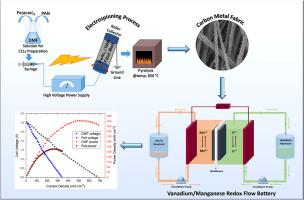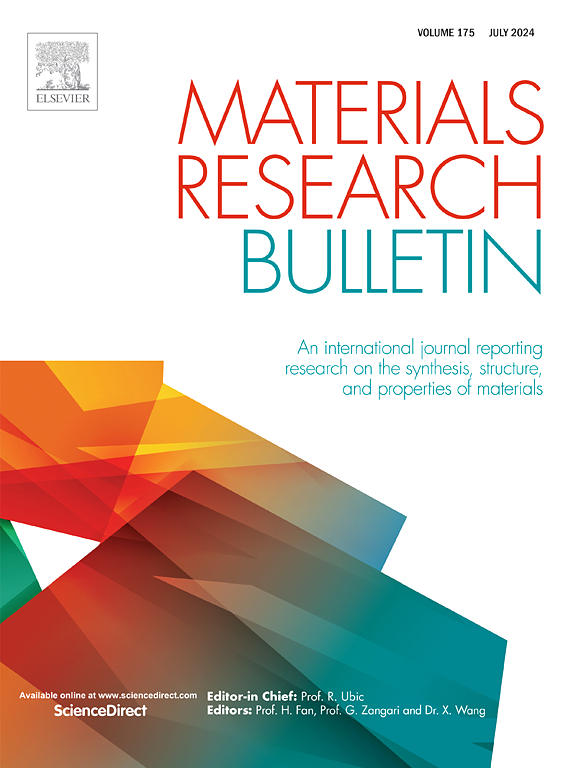Enhancement in the performance of a vanadium-manganese redox flow battery using electrospun carbon metal-based electrode catalysts
IF 5.3
3区 材料科学
Q2 MATERIALS SCIENCE, MULTIDISCIPLINARY
引用次数: 0
Abstract
This study investigates the performance of both a vanadium/manganese redox flow battery (V/Mn RFB) and an all-vanadium redox flow battery (VRFB), employing carbon metal fabrics (CMFs) prepared through electrospinning followed by carbonization. Noteworthy advancements are observed in both systems upon coupling CMFs with thermally treated graphite felt (GF) electrodes. Nearly doubled peak power density and 50 % higher capacity utilization over 150 charge/discharge cycles at 75 mA cm−2 are achieved for the V/Mn RFB with the incorporation of CMFs alongside graphite felt as catalysts. The VRFB demonstrates notable enhancements too, achieving approximately 200 cycles at a current density of 80 mA cm−2, with high efficiencies (85 %) and electrolyte utilization (79 %) when CMFs are used in combination with graphite felts. These advancements may facilitate pilot-scale testing and integration of the V/Mn RFB for the employment in the renewable energy storage sector and grid-balancing studies.

使用电纺碳金属基电极催化剂提高钒锰氧化还原液流电池的性能
本研究调查了钒/锰氧化还原液流电池(V/Mn RFB)和全钒氧化还原液流电池(VRFB)的性能,这两种电池都采用了先电纺再碳化的碳金属织物(CMF)。在将 CMF 与热处理石墨毡(GF)电极耦合后,两种系统都取得了显著进步。将 CMF 与石墨毡一起作为催化剂,V/Mn RFB 的峰值功率密度几乎翻了一番,在 75 mA cm-2 的条件下进行 150 次充电/放电循环后,容量利用率提高了 50%。VRFB 的性能也有显著提高,在电流密度为 80 mA cm-2 时可实现约 200 个循环,在 CMF 与石墨毡结合使用时,效率高(85%),电解液利用率高(79%)。这些进步可能会促进 V/Mn RFB 的试点规模测试和集成,以用于可再生能源存储领域和电网平衡研究。
本文章由计算机程序翻译,如有差异,请以英文原文为准。
求助全文
约1分钟内获得全文
求助全文
来源期刊

Materials Research Bulletin
工程技术-材料科学:综合
CiteScore
9.80
自引率
5.60%
发文量
372
审稿时长
42 days
期刊介绍:
Materials Research Bulletin is an international journal reporting high-impact research on processing-structure-property relationships in functional materials and nanomaterials with interesting electronic, magnetic, optical, thermal, mechanical or catalytic properties. Papers purely on thermodynamics or theoretical calculations (e.g., density functional theory) do not fall within the scope of the journal unless they also demonstrate a clear link to physical properties. Topics covered include functional materials (e.g., dielectrics, pyroelectrics, piezoelectrics, ferroelectrics, relaxors, thermoelectrics, etc.); electrochemistry and solid-state ionics (e.g., photovoltaics, batteries, sensors, and fuel cells); nanomaterials, graphene, and nanocomposites; luminescence and photocatalysis; crystal-structure and defect-structure analysis; novel electronics; non-crystalline solids; flexible electronics; protein-material interactions; and polymeric ion-exchange membranes.
 求助内容:
求助内容: 应助结果提醒方式:
应助结果提醒方式:


